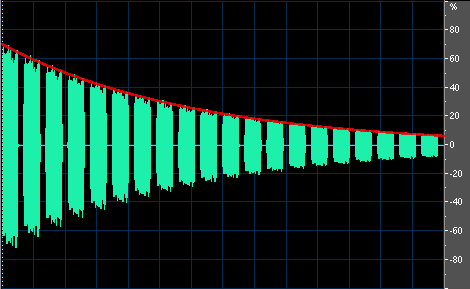What’s a decibel, and why should you care?

The decibel (dB) is considered the baseline by which all telecommunications designers compare cabling system performance. But what exactly is a dB? Furthermore, what’s so significant about one system performing a few dBs better than another system?
The answer to these two questions traces back to the terminology’s origin. The decibel was first used to measure the intensity of sound. It’s a convenient way for engineers to describe the input or output of either power or voltages. And specifying performance in units of decibels has several benefits.
ADVERTISEMENT
A decibel is generic; it can be used to describe performance independently of an application’s operating voltage or power.
The logarithmic scale on which a decibel is calculated allows performance specification across a broad range of voltage and power.
Decibels facilitate calculations and graphical solutions because you can add and subtract them, rather than multiplying or dividing their corresponding ratios.
From a practical standpoint, transmission performance is most commonly specified in units of dB.
For the simplest view of the decibel function’s operation, assume a reference voltage of one. When you plug the 1V figure into the decibel function and solve for the corresponding decibel that relates to half of the signal strength (0.5V), the solution shows that a 6dB performance improvement results in a 50% reduction in signal strength.
What does this formula (6dB = a 50% signal-strength reduction) mean with regard to cabling systems? A few things. For example, it means a 6dB crosstalk requirement would translate to 50% of the signal voltage being allowed to couple onto adjacent pairs. A 6dB return-loss requirement would allow 50% of the signal voltage to be reflected back on a transmission line. And a 6dB attenuation requirement would permit 50% of the signal voltage to be lost along a transmission line.
As this equation demonstrates, better crosstalk (near-end crosstalk [NEXT], far-end crosstalk [FEXT] and equal-level far-end crosstalk) and return-loss performance are specified by a larger performance limit, in decibels, because less signal voltage is coupled or reflected. Also, better attenuation performance is specified by a smaller performance limit – again in decibels – because less signal voltage is lost or attenuated.
Converting to simpler units
Converting a specified decibel limit to an actual percentage of voltage magnitude that is coupled, lost or reflected in a given application can simplify comparison of actual performance benefits by different category-rated components. Keep in mind that the comparison method applies to all component and cabling-system claims.
It’s also important to note that the decibel function can prove misleading when comparing performance data. For example, an 8dB improvement in connecting-hardware return loss (from Cat 5 to Cat 6) results in a 60% drop in reflected signal voltage, while a 14dB improvement in connecting-hardware NEXT performance (also from Cat 5 to Cat 6) results in an 80% drop in coupled signal voltage.
Decibel values and performance-headroom claims
Performance claims in decibels may also be converted to a voltage percentage lost, coupled, or reflected for any cabling product or system. Let’s look at an example of such a conversion using the typical and worst-case performance claims for a commercially available Cat 6 work-are outlet. The example shows that a worst-case 0.06dB attenuation performance converts to 0.7% of the signal being lost, while a typical 0.05dB attenuation performance converts to 0.6% of the signal being lost. Similarly, 54.8dB worst-case NEXT loss and 58.4dB typical NEXT loss convert to 0.2% signal coupling and 0.1% signal coupling, respectively. A 45.1dB worst-case FEXT-loss and 48.1dB typical FEXT-loss claim converts to 0.6% and 0.4% signal coupling, respectively.
And 28.9dB worst-case and 30.3dB typical return-loss performance convert to 3.6% and 3.1% signal reflection, respectively.
One of the advantages of comparing data on a percentage-voltage basis is that signal-performance margin is independent of the normalising tendency of the decibel function. For example, the aforementioned work-area outlets worst-case return-loss performance of 28.9dB calculates to a 6.9dB margin over the Telecommunications Industry Association (TIA – Arlington, VA) performance limits, but its performance actually delivers more than a 50% drop in reflected signal voltage compared to the limits.
Understanding the decibel function can provide additional insight into performance claims. In addition to reviewing specific frequency points of interest, note that an important aspect of complete component qualification includes knowledge of worst-case performance specifications and margins guaranteed over the full category frequency range of interest. Furthermore, always be sure to look for linear frequency response in addition to worst-case values when analysing performance data.
Converting decibel claims and margins to percentage voltage loss, coupled or reflected can provide meaningful insight into the magnitude of a manufacturer’s performance claims.
-
ADVERTISEMENT
-
ADVERTISEMENT

